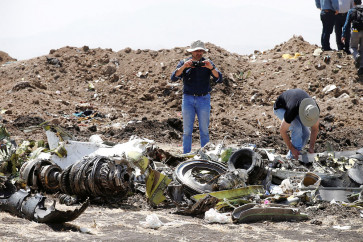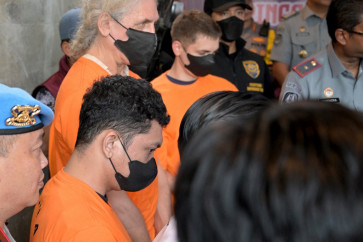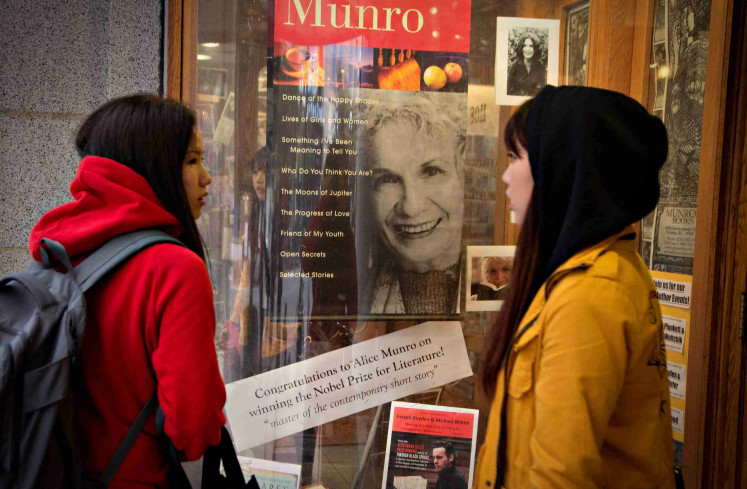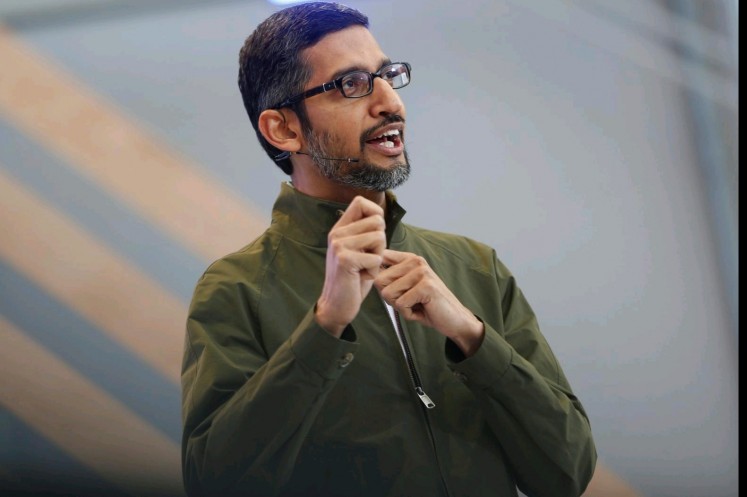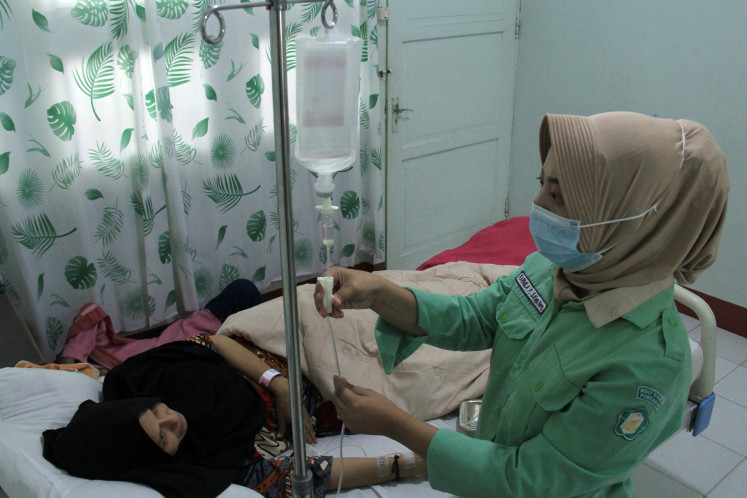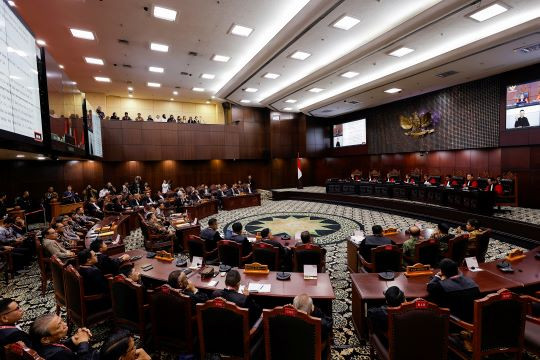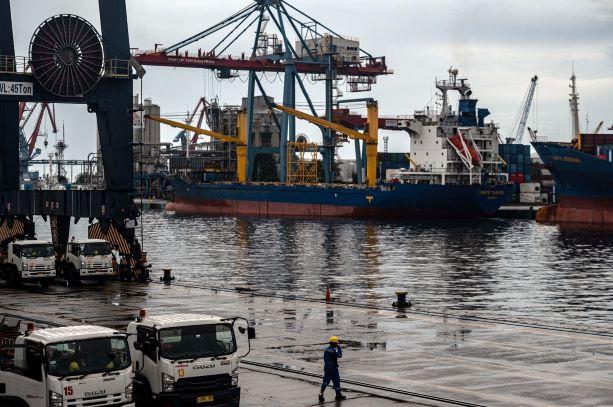Collective strives to shine the light of truth on Indonesia's 1965 tragedy
The #1965setiaphari (#1965everyday) initiative collects testimonies from the family members of Indonesians who were involved in the 1965 tragedy.
Change Size
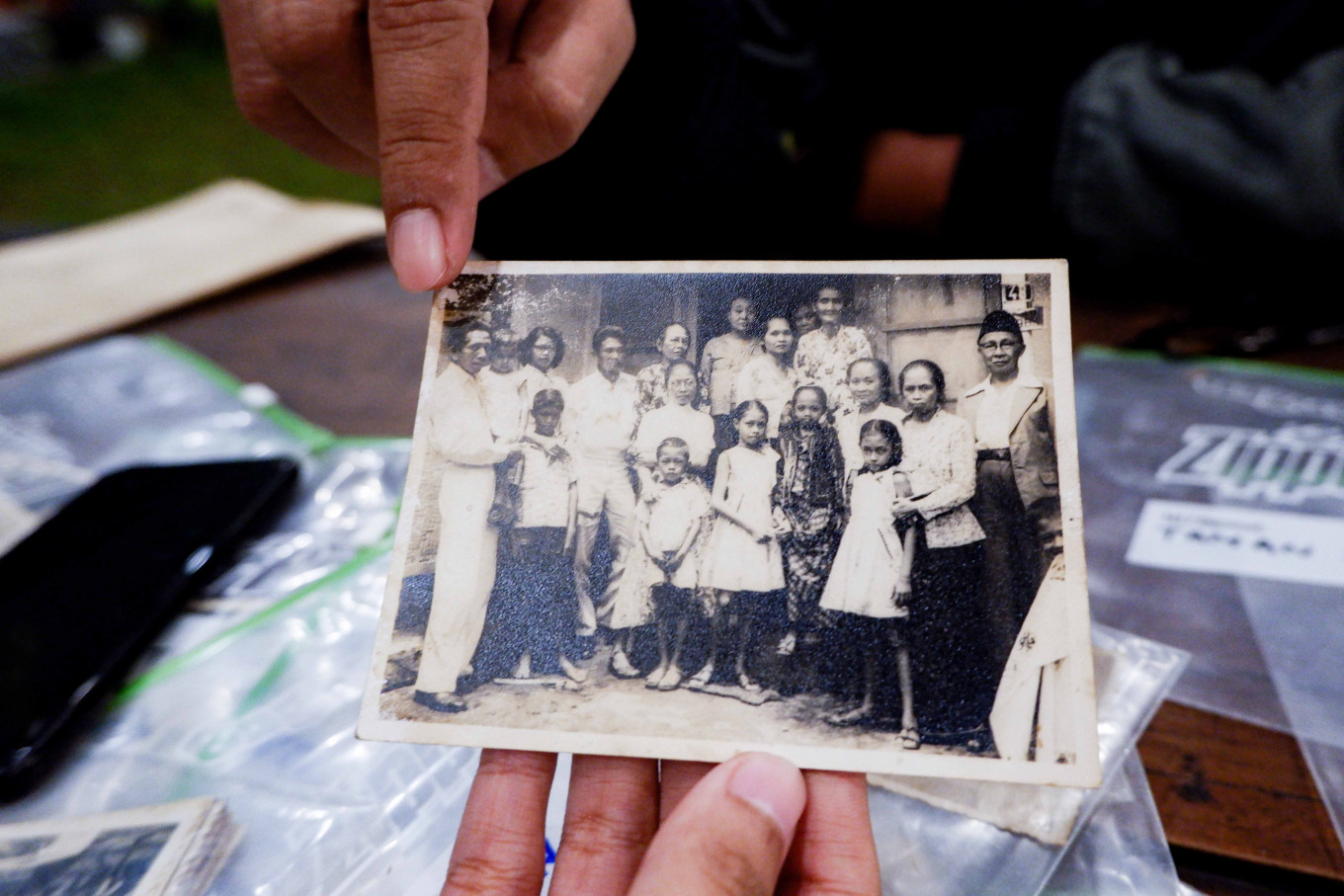 Rangga Purbaya points to his grandfather, who went missing in 1965, in an old black-and-white photograph. He was a teacher at Taman Siswa Bangka Belitung, which was associated with the Indonesian Communist Party (PKI). (JP/Umar Wicaksono)
Rangga Purbaya points to his grandfather, who went missing in 1965, in an old black-and-white photograph. He was a teacher at Taman Siswa Bangka Belitung, which was associated with the Indonesian Communist Party (PKI). (JP/Umar Wicaksono)
"I never got a clear answer from my family about the cause of my grandfather's death. And how come none of us know where his grave is?" This question haunted Farid Stevy, the 39-year-old singer of rock band FSTLVST, ever since he was a teenager. Having lived with his grandmother as a child, he realized there was a secret regarding his grandfather’s past.
A dozen years later, his father gave him hints.
"My father only gave me a clue; he said my grandfather died in 1965 and finally asked me to look for him together,” Farid said.
For many in Indonesia, 1965 carries dark memories, with the attack and subsequent massacre of Indonesian Communist Party (PKI) members — and anyone believed to be members — marking the beginning of the New Order era. The incident began with a military narrative about a coup by the PKI and resulted in the arrest, torture, disappearance and murder of millions of Indonesians without trial.
For 32 years, with his military dominance, Suharto silenced other versions of the incident in various ways, from intimidation to stigmatization, censorship and other means. As a result, the anti-PKI fanatical narrative was — and is still — accepted by many, while the victims’ narrative was drowned out by time.
Realizing that his grandfather's death was connected to the tragedy, Farid felt the need to investigate. After 10 years of personal research, supported by data collected by #1965setiaphari (#1965everyday) art collective, he found some answers in 2020.
"Previously, they didn't know who they wanted to talk to because this is a sensitive topic, until they were linked to the survivor network," he said.
Personal heartache
Tintin Wulia and Ken Setiawan initiated the #1965setiaphari project in 2015, based on their own families’ experiences.
“My house in Bali was burned down and my grandfather went missing, but the family has always been silent. They only started talking after Suharto stepped down. That was the moment when I became sure that many have similar stories," Tintin said.
Managed by 10 members who live in different regions, the #1965setiaphari collective collects hundreds of stories from contributors whose relatives were directly involved in the 1965 tragedy, both as “perpetrators" and "victims".
Rangga Purbaya, an artist from Yogya and #1965setiaphari member, said: "We don't want this collective to be exclusive; it shouldn't belong only to those who are related to the victims by blood. This tragedy is huge — surely everyone has a connection. That’s why everyone who cares about this matter can join and work with us.”
Similar to Tintin's experience, Rangga's father and grandfather were former political prisoners of the 1965 tragedy. His other grandfather “disappeared”, likely kidnapped and murdered, he said. His family's archives were hidden by his aunt when the arrests took place. He showed The Jakarta Post old photos of his father and grandfather.
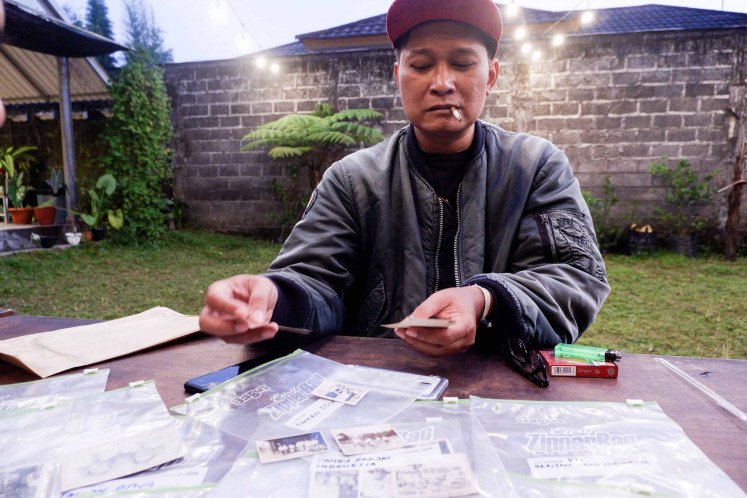
The stories of Tintin, Rangga and hundreds of other contributors were originally uploaded via the #165Setiaphari site but moved to Instagram in 2018, mostly to reach the younger generations. Between 201 and 2019, a new Instagram Story was uploaded every day.
"Usually, when someone tells a story, there is often a comment exclaiming, ‘Wow, we had a similar experience!'," Rangga said.
"There was once a grandson of a soldier who was involved in this project who, from initially being anti-PKI, started to find out what actually happened.”
According to him, these small achievements make #1965setiaphari worth the effort.
Fifty-six years after the tragedy, the demand for justice is aging alongside the survivors. As the number of key witnesses dwindles, the narratives kept by #1965setiaphari remind us of the burdens of history.
A family mission
In August 2020, Farid Stevy took his son and father to Luweng Grubug, Yogyakarta. The deep vertical cave in Gunung Kidul, which is approximately 100 meters deep, is known as one of the locations where many executions took place. Carrying a bunch of wildflowers and weeds, the three of them knelt down to say a prayer at the edge of the hole.
"It may sound absurd, but when I found this place, I knew this was my grandfather's last location before he disappeared," said Farid.
Before meeting the #1965setiaphari community, Farid's search for his grandfather was only based on clues from a relative's dream. In the dream, his grandfather is standing shirtless, with his right pant leg rolled up to the knee. Farid and many in his family believe that the dream was some sort of code.
"Luweng Grubug fits all the codes in the dream. My father also felt the same way; he felt his father was there.”
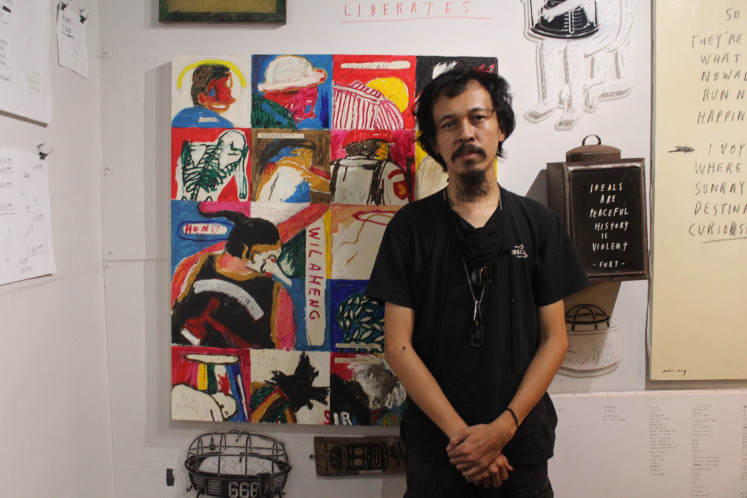
Not only was it a relief, but this quest sparked dialogue and revealed many things in the family. He finally found out that his grandfather had been the chairman of the PKI Central Committee in Playen, Gunung Kidul. He also understood that his family's choice to remain silent was the result of trauma and a means of political protection, all for his own safety. That same year, he added one word to his name and changed it to Sirin Farid Stevy. Sirin was his grandfather’s name.
He and Rangga are now working on a new project titled Field of Speculation, a digital map of sites related to the 1965 tragedy.
"The first generation is the generation that was crushed, the second generation was silenced, the third generation — us — is the one that should talk and the fourth generation, hopefully, will win the narrative," he said.

